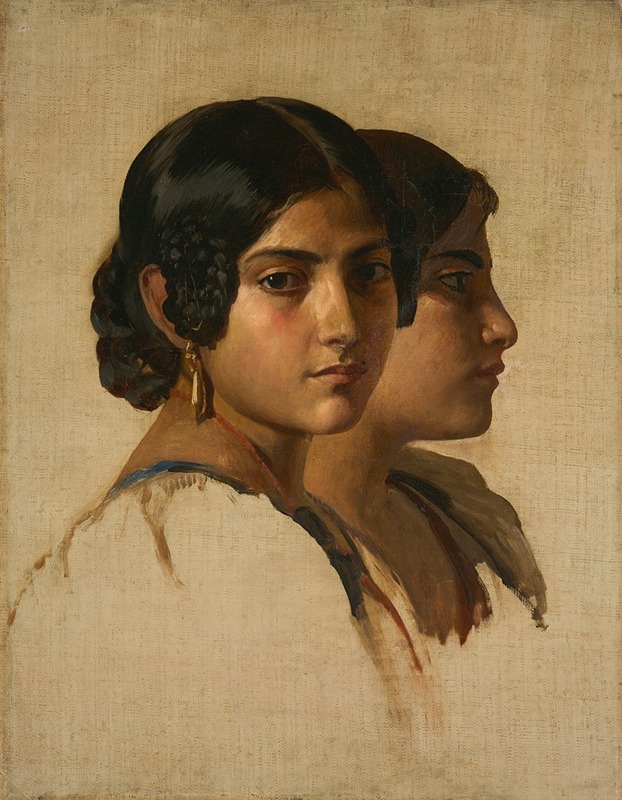
Study of an Italian Girl
A hand-painted replica of Franz Xaver Winterhalter’s masterpiece Study of an Italian Girl, meticulously crafted by professional artists to capture the true essence of the original. Each piece is created with museum-quality canvas and rare mineral pigments, carefully painted by experienced artists with delicate brushstrokes and rich, layered colors to perfectly recreate the texture of the original artwork. Unlike machine-printed reproductions, this hand-painted version brings the painting to life, infused with the artist’s emotions and skill in every stroke. Whether for personal collection or home decoration, it instantly elevates the artistic atmosphere of any space.
Franz Xaver Winterhalter was a renowned German painter known for his flattering portraits of royalty and upper-class society in the mid-19th century. One of his lesser-known works is "Study of an Italian Girl," which exemplifies his skill in capturing the delicate features and expressions of his subjects.
Winterhalter was born in 1805 in the small village of Menzenschwand in Germany's Black Forest region. He initially trained as a lithographer before studying painting in Munich. His career took off when he moved to Paris, where he became a sought-after portraitist for European aristocracy. His ability to render luxurious fabrics and capture the elegance of his sitters made him a favorite among the elite.
"Study of an Italian Girl" is a fine example of Winterhalter's portraiture, although it does not depict a member of the aristocracy. Instead, it focuses on a young Italian girl, capturing her in a moment of quiet reflection. The painting is characterized by its soft brushwork and the gentle play of light on the girl's face, highlighting Winterhalter's technical proficiency and his sensitivity to his subject's mood.
The painting is believed to have been created during one of Winterhalter's travels. He often visited Italy, a country that inspired many artists of his time due to its rich history, culture, and picturesque landscapes. While Winterhalter is primarily known for his formal portraits, works like "Study of an Italian Girl" demonstrate his ability to capture more intimate and personal subjects.
In this study, Winterhalter employs a subdued color palette, focusing on earthy tones that complement the girl's natural beauty. Her attire is simple, yet the artist's attention to detail is evident in the delicate rendering of the fabric and the subtle shading that gives depth to her features. The girl's expression is serene, with a hint of introspection, inviting viewers to ponder her thoughts and emotions.
Winterhalter's work, including "Study of an Italian Girl," reflects the Romantic ideals of the time, emphasizing emotion and individualism. His portraits often convey a sense of idealized beauty, yet they also capture the essence of his subjects, making them relatable and timeless.
While "Study of an Italian Girl" may not be as widely recognized as some of Winterhalter's royal portraits, it holds its own as a testament to his versatility and skill as an artist. The painting serves as a reminder of the artist's ability to transcend the boundaries of formal portraiture, offering a glimpse into the everyday lives of people who were not part of the aristocracy.
Today, Winterhalter's works are celebrated for their elegance and technical mastery. "Study of an Italian Girl" remains a cherished piece, appreciated for its simplicity and the quiet dignity it bestows upon its subject. The painting continues to be studied and admired by art enthusiasts and historians, who recognize Winterhalter's contribution to the world of portrait painting.

















